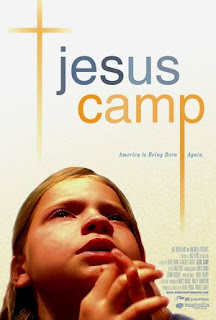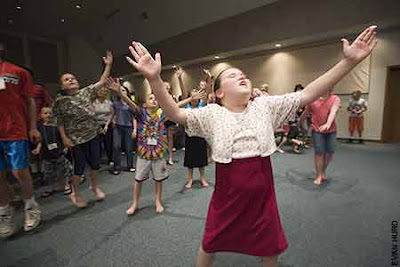Monday, February 8, 6:30 pm
Ferguson Auditorium in 600 S. Michigan Ave, room 101
Jerry A. Coyne, Ph.D. presented the findings collected in his book Why Evolution is True. He discussed where evolution falls in the conversation of Fact & Faith.
When Professor Eric Scholl visited our class in the second week of the semester, he passed out flyers about this event and made an aside about how the title for Dr. Coyne's book leaves little wiggle room. I thought it would be interesting to hear someone speak so unwaveringly about Fact & Faith, or at least about science and religion. Dr. Coyne did not let me down!
He began by discussing the definitions of words as they're used scientifically. Coyne says that laypersons assume theory implies that an idea is still under consideration, still requires more proof before it becomes fact. Coyne informs us, however, that the word theory is interchangeable with scientific fact. Evolution is a theory; it is also a scientific fact.
Coyne showed this chart. The list at left are the 35 most "developed" countries. The blue bar shows what percentage of each country's citizens/residents believe evolution is true. The yellow bar shows what percentage is unsure whether or not evolution is true. The red bar shows what percentage believes evolution is false. Of these 35 countries, United States is ranked 34. Only about 40% of our population believes evolution is true. Of this list, only one other country has fewer citizens who believe in evolution.
So Coyne began showing us why we should believe in evolution. I don't intend to retell his lecture. (I'm already worried about how accurately I'm retelling the facts/ideas I include in this blog.) Here are some highlights:
Our design flaws serve as proof for evolution.
Scientists believe/know that the first life developed as microorganisms in water. They became plants and animals in water, and these plans and animals evolved into other plants and animals that could live on land. They also believe/know that land mammals eventually returned to the water. In the last 20-30 years, scientists have found information that connect the animals that first moved from land to water to our contemporary whales and dolphins.
Above is the skeleton of a humpback whale. You can see a small white dot at its pelvis. This white dot is a bone that land mammals also have, and from this bone develops hind legs. Of course, whales and dolphins don't have hind legs, but they do have remnants of their ancestors' hind legs in their skeletons. Occasionally whales and dolphins will develop hind flippers from this bone. This bone and these occasional hind flippers serve no purpose to these whales and dolphins.
The design flaws he mentioned in humans included our tendency to develop pain in our backs, women's painful and dangerous childbearing, and men's problems with their prostates. (Coyne asked, why would a benevolent power/being, or even an indifferent power/being decide to place a gland that tends to swell (prostate) around a collapsable tube (urethra)?)
There are no endemic mammals, reptiles, or freshwater fish on islands that developed from volcanic eruptions, places like Hawaii. (They do occur naturally on islands like the United Kingdom or Madagascar, land masses that broke off a larger continent.) Yet, when mammals, reptiles, and freshwater fish are introduced to these islands, they can survive and thrive.
Coyne argues that if mammals, reptiles, and freshwater fish weren't intended to live on Hawaii, if some being had decided they shouldn't live on these islands, then they shouldn't be able to survive and thrive there. He says that birds and plants typically inhabit these sorts of islands because they could drift/fly there. Mammals, reptiles, and freshwater fish, of course, need to travel there via other constructs/beings.
I could go on and on. When I got home that evening, I quickly relayed as much as I could remember to my husband. I was enthralled by the evidence and fascinating facts I didn't know about evolution. Dr. Coyne said that his students from 20 years past have told him what they remember from these lectures and he ensured us we'd remember some of this information for at least 20 years.
But with our Writing & Rhetoric II class in mind, and with Critical Encounters: Fact & Faith in mind, I shall continue...
I think the creators of this event certainly had this question in mind: "What is objective truth? Does it exist? Can it be captured?" Coyne says in countries where many people believe in God, fewer people believe in evolution. In countries where few people believe in God, many people believe in evolution. He says that countries where many people feel secure (job satisfaction/security, health care, stability), few people believe in God. In countries where many people feel insecure, many people believe in God. (I realize the trouble with my using words like few and many to stand in for real statistics.)
"Where do fact and faith intersect? Is proof necessary for belief? What is the relationship between personal faith and the development of fact? How does one's faith shape his/her perspective of fact?" Coyne says that writing his book may be purposeless if we continue to live in a country with such a strong belief in God. He says we need to change our society, live in a country where we can feel more secure (not move, but change our country to increase its stability), eliminate our belief in and reliance upon God, and believe what he considers such straightforward facts that support the theory of evolution.
"How do fact and faith influence what it means to be human?" Coyne believes unequivocally in scientific fact.
"How do our beliefs and discoveries transform our relationship to people, places, society, the planet?" Coyne studies life. He wants to understand our world and how it became this way through evolution. He wants to share that knowledge and understanding with others.
"What is the process of creation? What is the process of discovery? How are they different?" It seems that we are constantly creating in our constant evolution. It seems that scientists discover when they understand how this creation happens.
I thought of our class often during the lecture and discussion. Many of you are writing about that place between pure fact and pure faith. Some members of the audience wanted to make clear that it's possible to believe in God and evolution. Coyne doesn't believe there's room for both -- either you mistakenly believe in God or you correctly believe in evolution.
With more time, I'd like to explore with you the boundaries of these words, fact and faith. When are they interchangeable? When are they completely separate? Do you think evolution is purely fact and therefore true? Do you think religion is purely faith and therefore false?
The New York Times Magazine published on 2/14/10 an article called "Founding Father?: Conservative Activists on the Texas Board of Education Say that the Authors of the Constitution Intended the United States to be a Christian Nation. And They Want America's History Textbooks to Say So, Too." Russell Shorto wrote the article.
I will read the article and probably edit my post or simply discuss during class. I wonder how this connects with science books that acknowledge both evolution and creationism, or only creationism.















